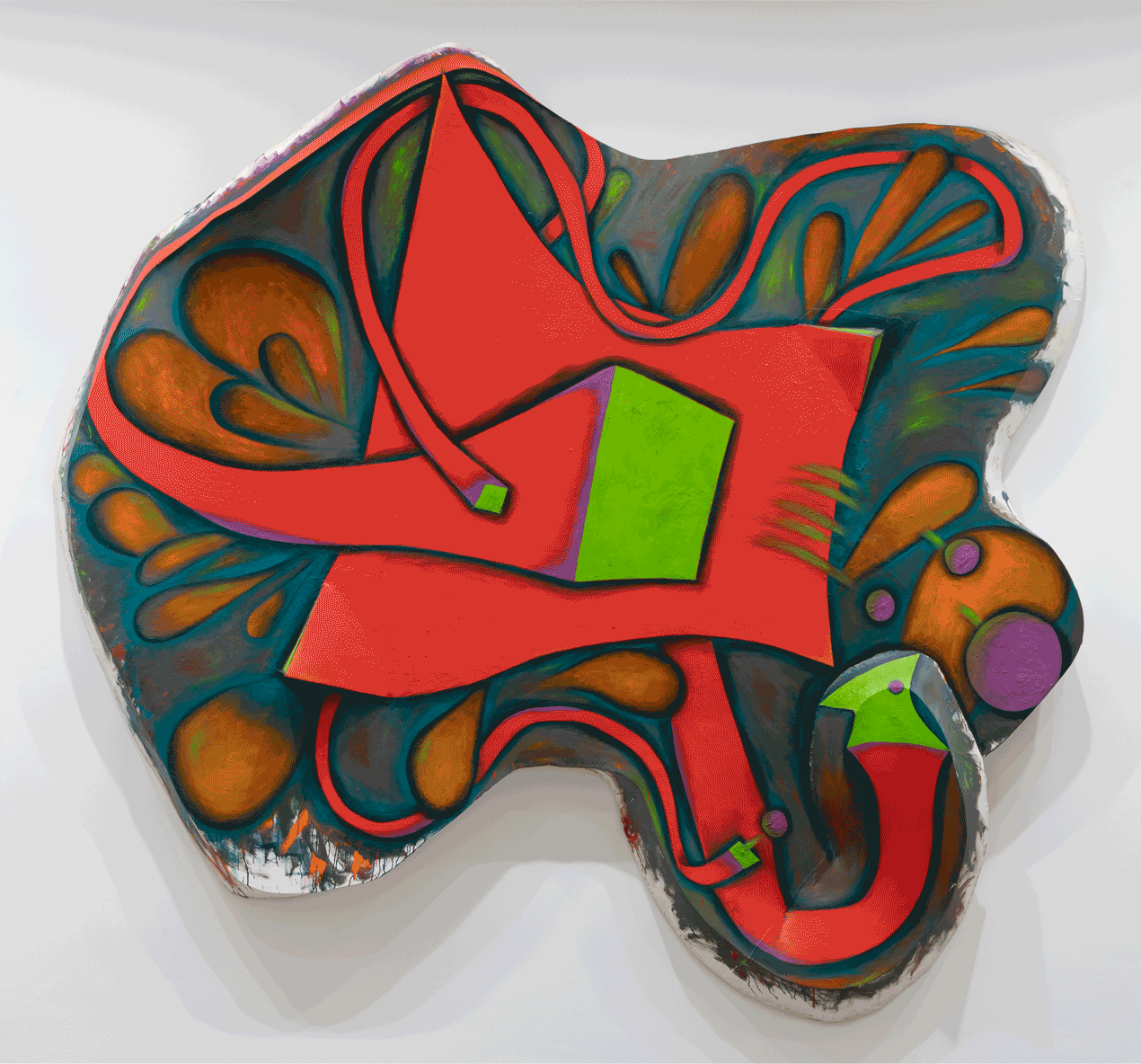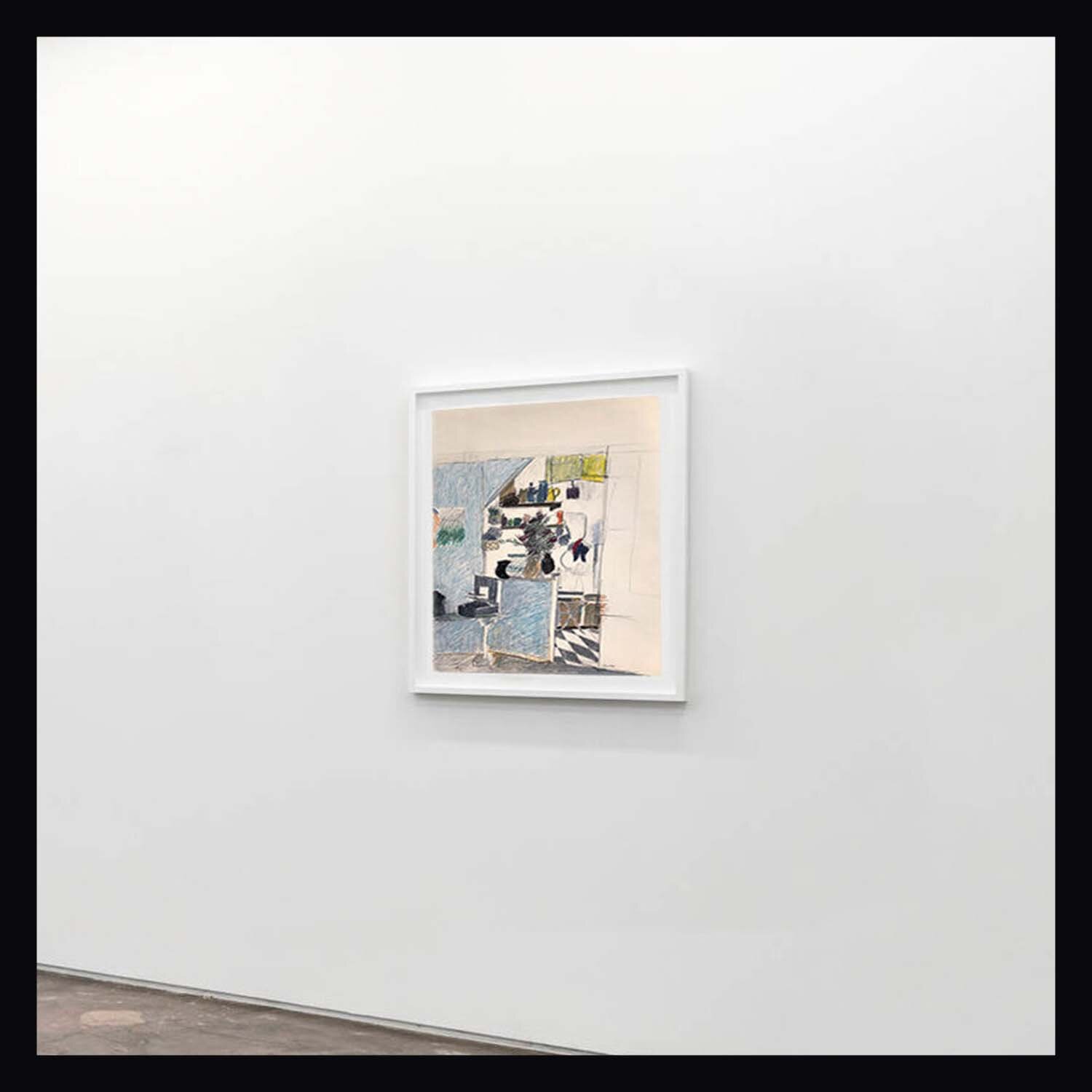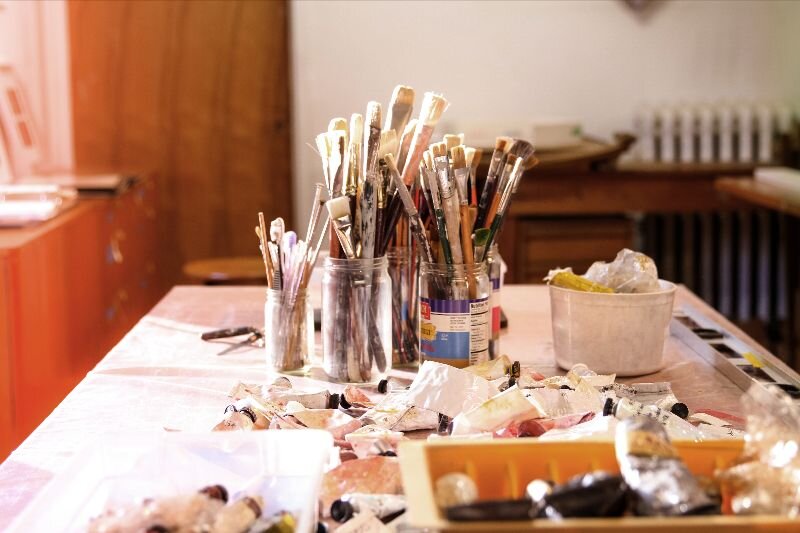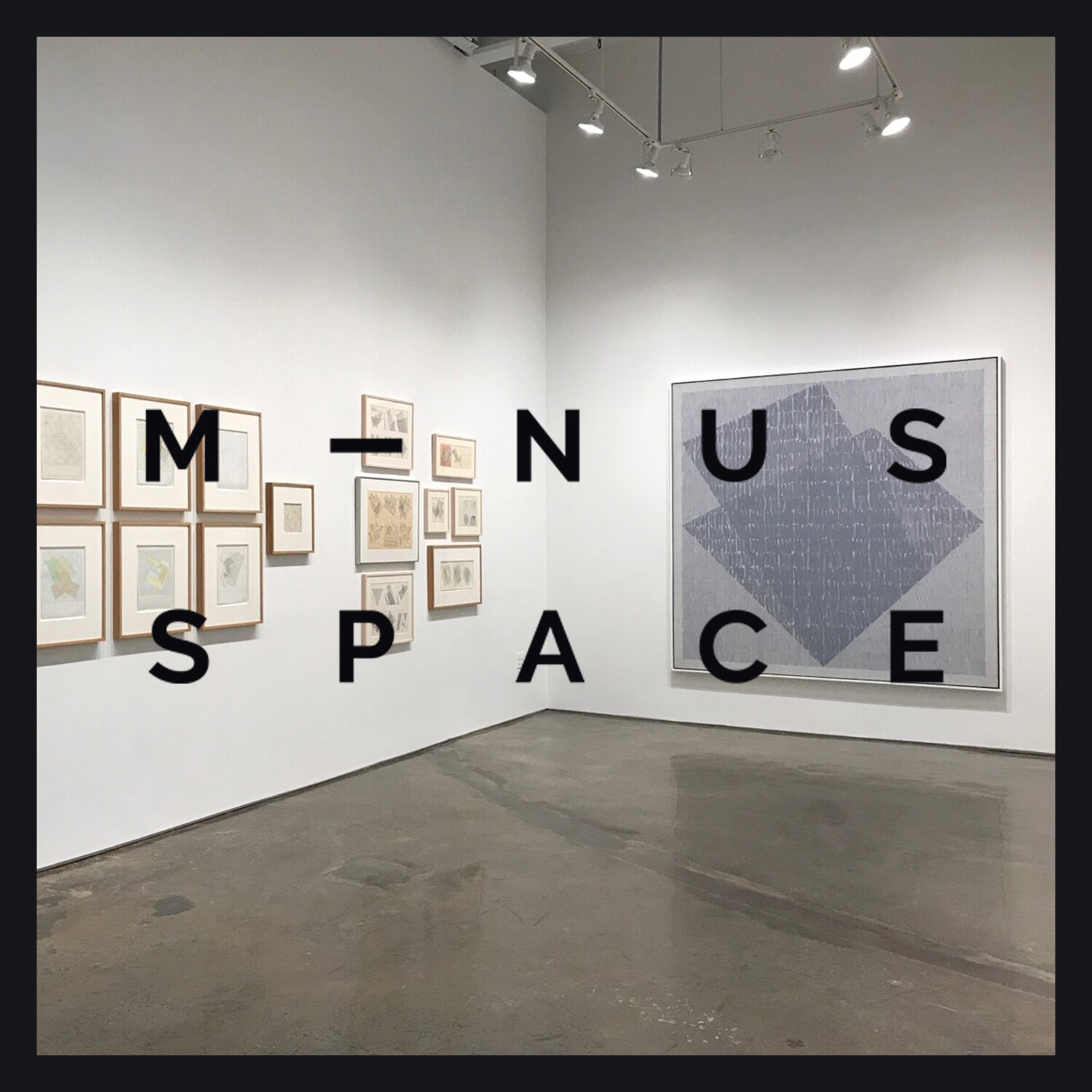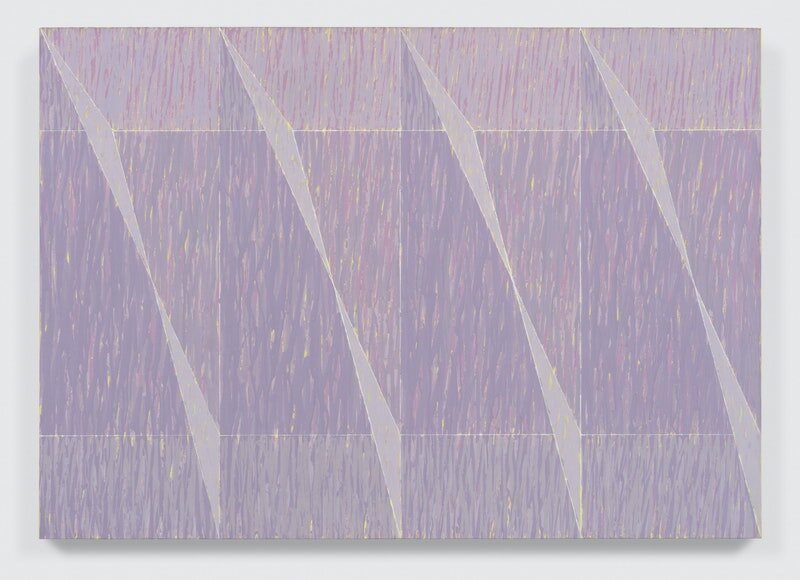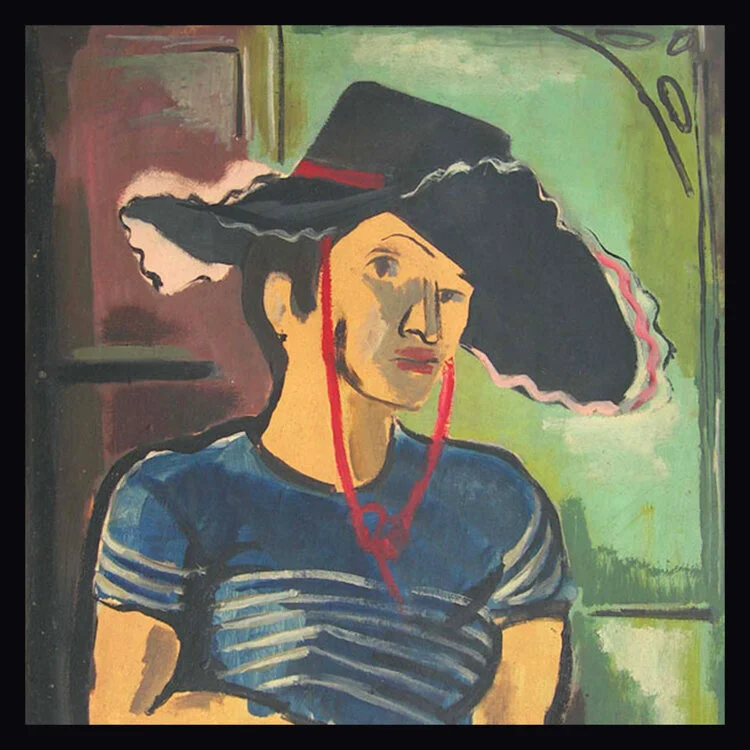Resources
ABOUT US / SERVICES / OUR CLIENTS / STORE / CONTACT
Exhibition News: Elizabeth Murray at Gladstone Galley

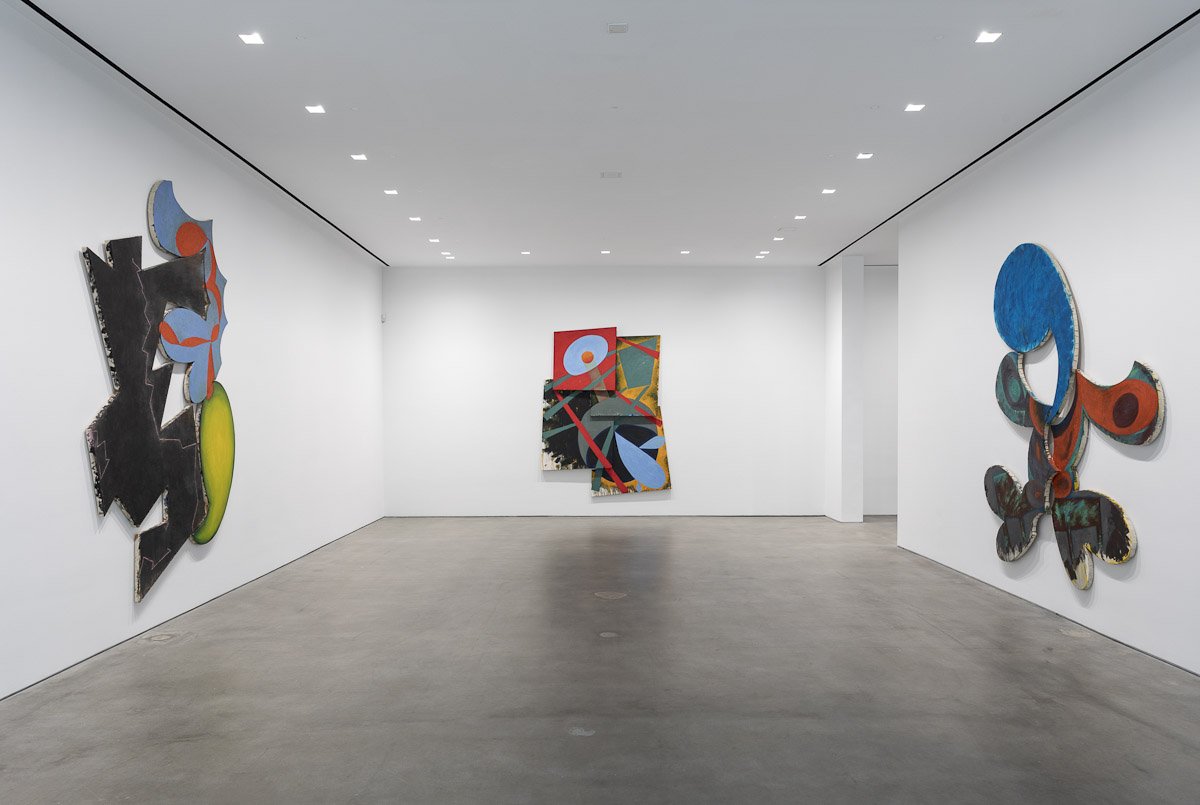
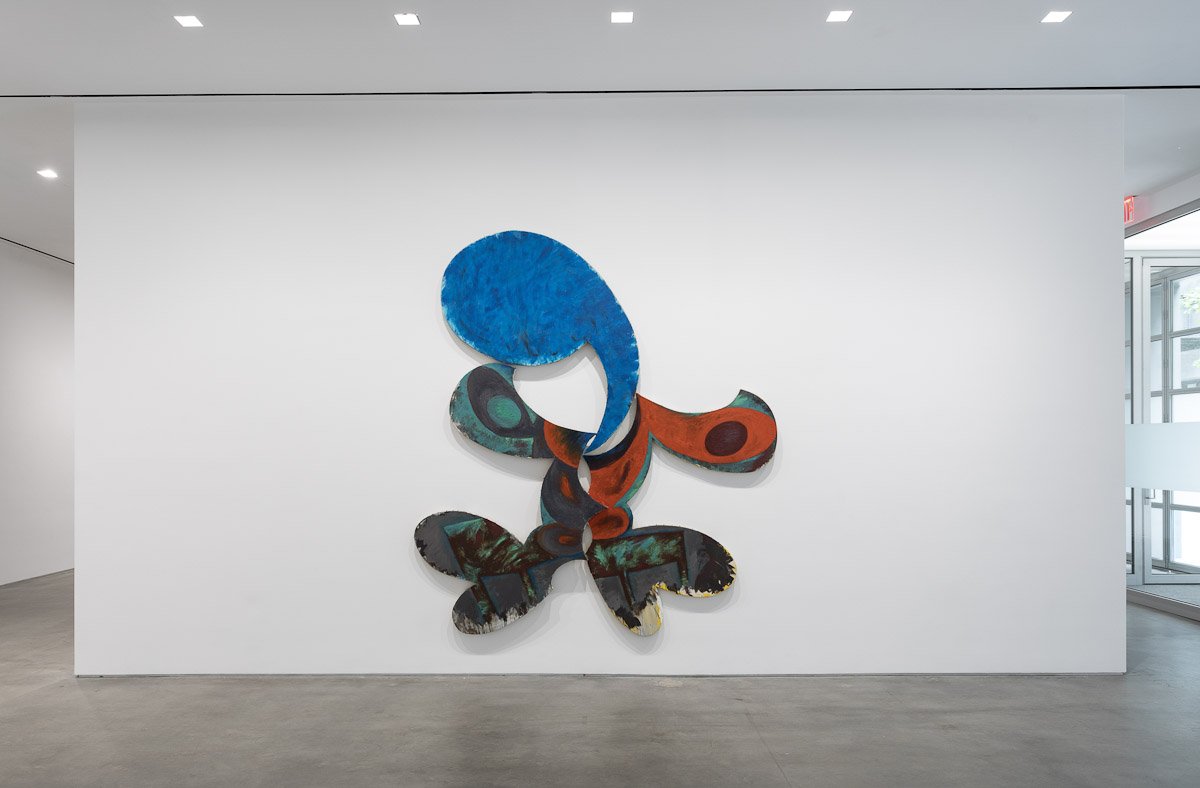
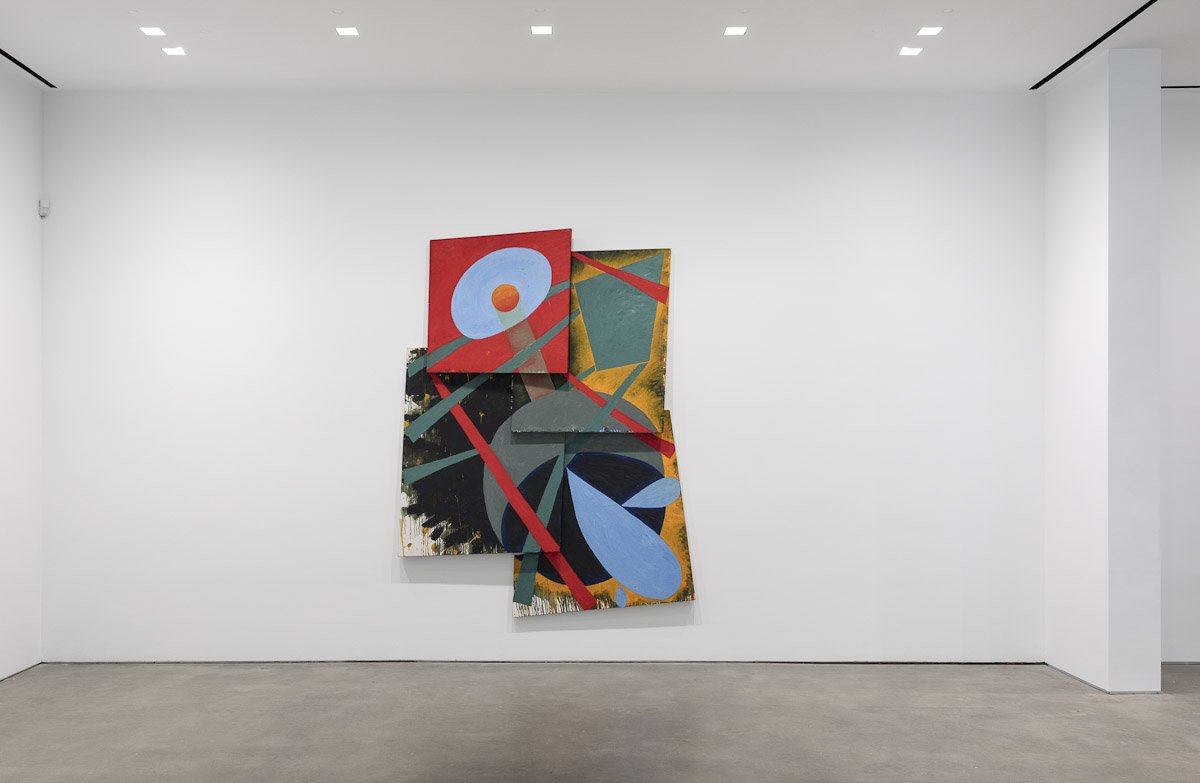
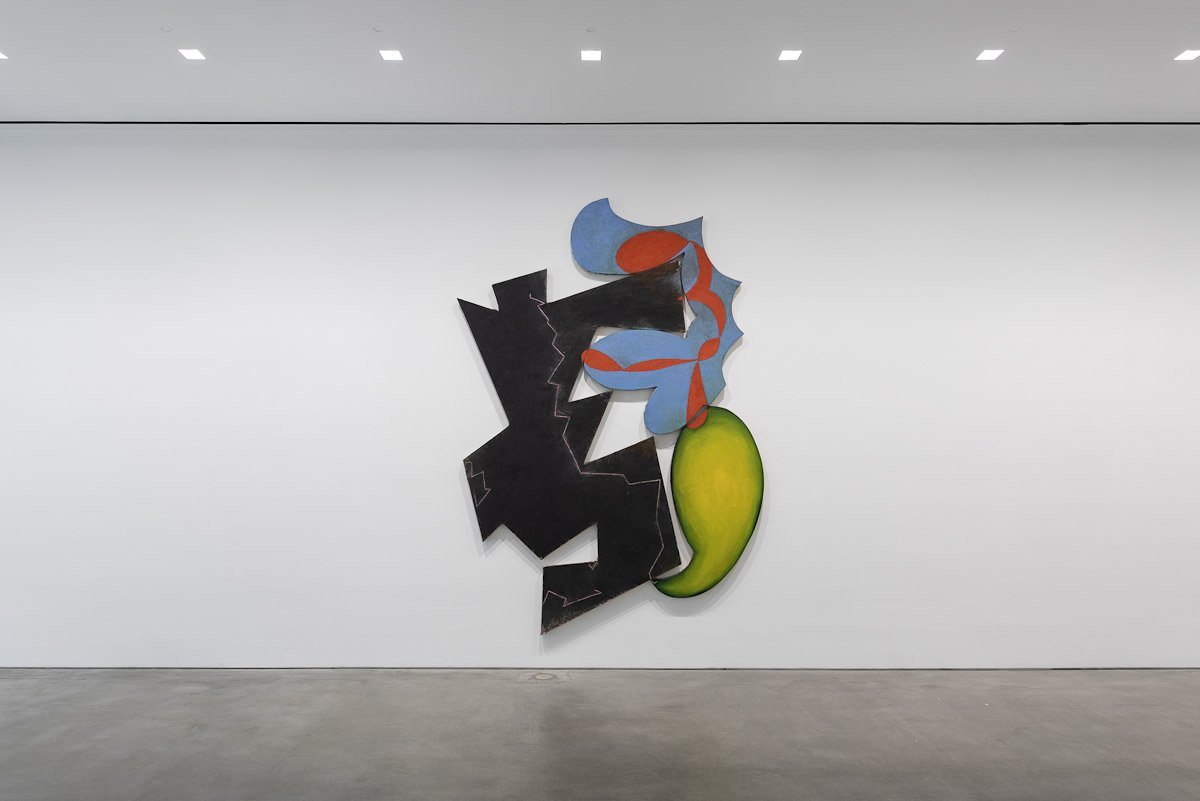
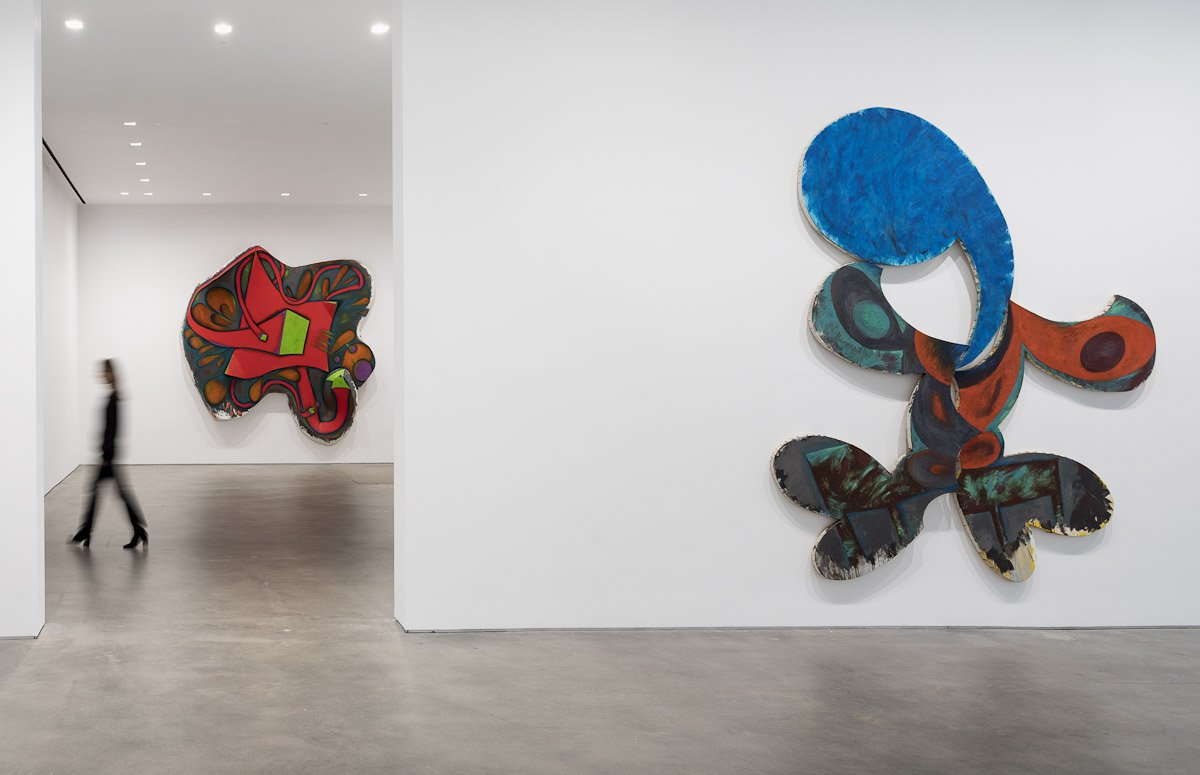
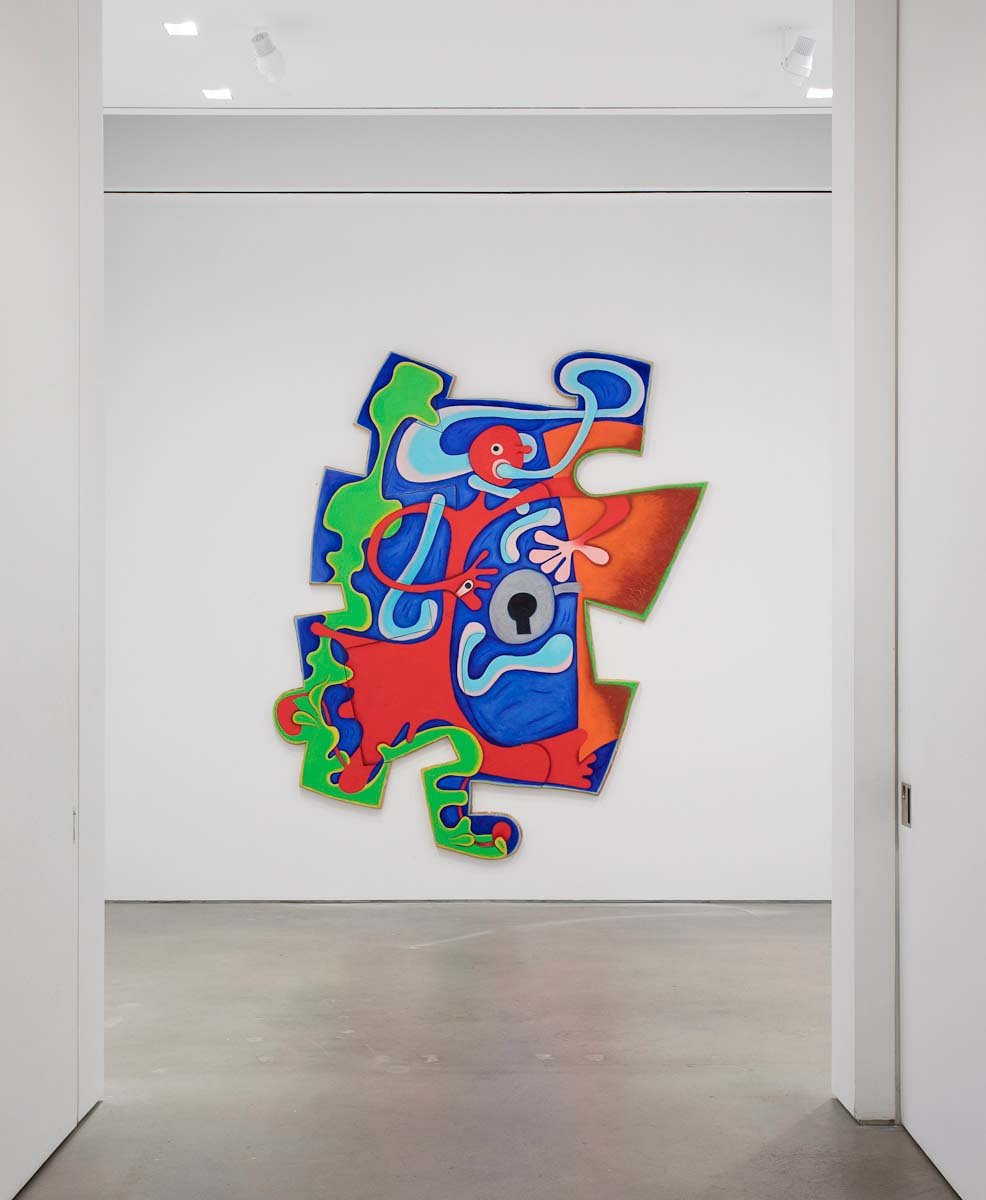
Elizabeth Murray
October 30 – December 23, 2021
515 West 24th Street
Gladstone Gallery is pleased to announce its first exhibition with the Estate of Elizabeth Murray after announcing representation in the summer of 2020. This show presents a selection of the artist’s monumental canvases that helped define her career and singular place in art history.
I was in Elizabeth Murray's painting class at The School of Visual Art in New York City in the mid-70s... Elizabeth was exactly the mentor we sought, someone who by dint of both gender and disposition occupied an inside and outside position... Murray simply refused to submit to the position of illegitimacy that females experience in painting history. She just broke on in, seemingly taking what she needed from painting, and moving forward with it, like a shoplifter, or someone from inside the Trojan Horse.
— Amy Sillman on Elizabeth Murray in Texte Zur Kunst, 2021
Murray was born in Chicago in 1940 and had an early interest in making and studying art. While attending the School of the Art Institute of Chicago, she was deeply influenced by the work of Paul Cézanne, which inspired her to pursue a degree in painting. Following her education, Murray moved to New York, where she developed a unique approach to artmaking and honed her intuitive ability to masterfully combine shapes and colors in both two- and three-dimensional realms. With a fascination for the plastic qualities of paint, she spent the decade of the 1960s experimenting with soft sculpture. Her compositions from the 1970s, in which rhythmic symbols play across thickly-layered rectangular planes of color, demonstrate Murray’s astuteness at crafting and understanding form, and highlight the artist’s hand during a period when Minimalism was the predominant movement in New York’s art scene. Her radical and trailblazing approach to art making evolved with the introduction of massive sized, multi-panel works in relief configurations. These complex canvases, which began in the early 1980s and continued until her death in 2007, challenged the very definition of painting. When her spirals and pregnant commas began to suggest recognizable forms—cups, tables, chairs—the narrative of the work was labeled "domestic." To this she replied, “Cézanne painted cups and saucers and apples, and no one assumed he spent a lot of time in the kitchen.”
With a pioneering practice that has bridged Cubism, Surrealism, Abstract Expressionism, and Minimalism, Murray was instrumental in reawakening the power of painting, and her expansive body of work continues to influence and inspire artists, writers, and curators in long-lasting, profound ways.
Murray’s work has been the subject of major exhibitions around the world since her New York City debut in the 1972 Annual Exhibition, “Contemporary American Painting” at the Whitney Museum of American Art. Solo exhibition highlights include: Camden Arts Centre, Camden, UK (2019); Anderson Collection at Stanford University, CA (2018); Musée d’art modern et contemporaine, Geneva (2016); BAM, Brooklyn, NY (2016); Cantor Arts Center, Stanford University, CA (2014); Arts Club of Chicago (2009); University Art Gallery, Staller Center for the Arts, Stony Brook University, NY (2008); Nerman Museum of Contemporary Art, Overland Park, KS (1993); Newark Museum, NJ (1992); Wexner Center for the Arts, Columbus, OH (1991); and San Francisco Museum of Modern Art, CA (1988). In 1987, a mid-career retrospective, “Elizabeth Murray: Paintings and Drawings,” organized by Sue Graze and Kathy Halbriech, originated at the Dallas Museum of Art, and later traveled to the Albert and Vera List Visual Arts Center, MIT, Cambridge and Museum of Fine Arts, Boston; The Museum of Contemporary Art, Los Angeles; Des Moines Art Center, Des Moines; Walker Art Center, Minneapolis; and the Whitney Museum of American Art, New York. In 2005, The Museum of Modern Art, New York, opened a career retrospective, which traveled to Intitut Valencia d’Art Modern, Valencia Spain. Murray was recently the subject of two major museum exhibitions at the Contemporary Arts Museum Houston, “Wild Life: Elizabeth Murray & Jessi Reaves,” curated by Rebecca Matalon, which is currently on view at the Carnegie Museum of Art through January 9, 2022, and the University at Buffalo Art Galleries, “Elizabeth Murray: Back in Town,” curated by Robert Scalise.
Mimi Chen Ting: announcing new website
Since the late 1960s, Ting has harnessed the inspiration of “sky,” “land,” and the balance of ever changing physical and spiritual “unfixed” horizons in her work spanning six decades. A prominent figure in the artist communities of Taos, New Mexico, and Sausalito, California, she has exhibited extensively including recent solo presentations at Vedder Price, San Francisco (’18) and historic group exhibitions including Work by Women: Postwar Dialogues at the Harwood Museum of Art, Taos (’18).
Born in Shanghai, China, at the end of the Second Sino-Japanese War, Mimi Chen Ting spent her childhood and teenage years in Hong Kong. In 1965, she moved to San Francisco, California, to pursue dual degrees in Sociology and English Literature at the San Francisco College of Women (now part of the University of San Francisco). After her third year at college—and a year of social field work—Mimi realigned her life in the pursuit of art and performance. She graduated from California State University, San Jose, with a BA in Art in 1969 and later received her MA in painting in 1976 from the same institution. In 2003 she received an NEA Grant for the performance How to Make a Book and Eat It Too at the Millicent Rogers Museum, Taos, NM. Recent awards and honors include the 2012 Agnes Martin Award for Abstract Painting and Drawing from the Peter And Madeline Martin Foundation for The Creative Arts.
This new website features an artist-curated selection of images of signature works from the now five-decade career of Mimi Chen Ting, including extensive biographical information, exhibition and performance history, and bibliography.
"Ting melds art and life like no other artist I know. Though working strictly within an abstract vein, I see a keen and perceptive understanding of beauty and its translation through a very personal and emotional language. There is so much more to see and learn through her art and performances."
— Jason Andrew
Founding Partner at Artist Estate Studio, LLC
Confetto 3, 2008
Acrylic on canvas, 25 X 25 in (63.5 x 63.5 cm)
Collection of the Harwood Museum, Taos, NM
Exhibition News
Chimayo Trading Del Norte presents:
Eleven:
featuring the work of Nicki Marx, Gretchen Ewert, Annell Livingston, Margaret Nes, Mimi Chen Ting, Sandra Lerner, Ann Huston, TJ Mabrey, Ginger Mongiello, Paula Verona, and Christine Taylor Patten
Chimayo Trading Del Norte
#1 St. Francis Church Plaza
Ranchos de Taos, NM
Virtual Exhibition: Five Drawings opens for Janice Biala
Even at the height of her most gestural abstractions, Biala (1903-2000) held tight to traditional subject matter that inspired her—still lifes, interiors, landscapes, and portraiture. These subjects, rooted in old Europe, remained true for Biala throughout her career. Recently a portfolio of drawings was catalogued by the estate. Made available here for the first time in this online gallery curated by Jason Andrew, Curator/Director of the Estate of Janice Biala.
This selection features five large drawings by Biala depicting the interiors of her home at 8 rue Bertrand in Paris, France. These drawings, dating from 1965 to 1983, capture scenes within scenes, sometimes even combining two entirely different architectural points of view—a few even illustrate her own paintings in situ. They offer reference and perspective into Biala’s colorful and complex world—one that captures the sublime assimilation of the School of Paris and the New York School of abstract expressionism.
These are no easy interiors… her mark and gesture move them from the mere domestic to the dramatic.
— Jason Andrew
Virtual Event | Joan Witek: an online talk, Thursday July 8
Join us online for a talk with SKK founder and collector Carl-Jürgen Schroth and Bartha Contemporary director Niklas von Bartha
Online Talk, Thursday, July 8
7 PM UK / 8 PM CET / 2 PM NYC
Please join us online for a talk with SKK founder and collector Carl-Jürgen Schroth and Bartha Contemporary director Niklas von Bartha, exploring Joan Witek's current exhibition at the Museum Wilhelm Morgner in Soest, Germany. Jason Andrew, friend and manager of Witek's studio will introduce her ouevre.
The exhibition, organized by Stiftung Konzeptuelle Kunst, continues until Sunday, July 18.
Schedule:
20:00* Welcome by Carl-Jürgen Schroth
Collector and founder of Stiftung Konzeptuelle Kunst, Soest
20:10* Introduction:Joan Witek by Jason Andrew
Artist Estate Studio LLC, NYC, manager of the Studio of Joan Witek
20:20* Curators Carl-Jürgen Schroth and Niklas von Bartha will discuss their continued involvement with Joan Witek's work and their longstanding friendship with the seminal artist
Questions by the public
20:45* End
* All times local (Soest)
UK 7-7.45 PM, NYC 2 - 2.45 PM
This event is free and held in English.
Joan Witek, P-161, 2013, Pencil and Oil stick on canvas, 45 x 73.5 in (114.3 x 186.7 cm)
© 2021 Joan Witek / Artists Rights Society (ARS), New York
Siri Berg (1921-2020): announcing new website!
Artist Estate Studio, LLC is pleased to announce the launch of a new website for Siri Berg (1921-2020) created in collaboration with the artist's estate. The new site builds upon an extensive archive compiled by the artist as revisited by Artist Estate Studio, LLC.
Jason Andrew writes:
"I had the great opportunity of meeting Siri on the occasion of her historic survey at the Shirley Fiterman Art Center in 2016. Previous to this, I was aware of her now legendary obsession with color. In the great tradition of geometric abstraction, Siri's work is noted for its purity as color became her calling card. Color and texture gave way to personal stories told through an embracing of total abstraction. Inspired by the theories put forward by Johannes Itten and Josef Albers, Siri took hold of their statements turning out her own theories ranging from bold and fast-forward to subdued and slow in motion."
Siri Berg (1921-2020) "Shiftings (SBE0154)", 2010, Oil on canvas (five parts), 30 x 107.5 in (overall) (76.2 x 273.1 cm) Collection of the Estate of Siri Berg
Siri Berg (1921-2020) "Gradation (Blues) (SBE1449–1457)", 2010, Oil on canvas (nine parts), 20 x 90 in (overall) (50.8 x 228.6 cm), Collection of the Estate of Siri Berg
Work in Focus
"Kabbalah," 1985
Acrylic on canvas
72 x 72 in (182.9 x 182.9 cm)
SBE0479-11
Learn more about the intention behind the making this work here.
Book Store
In addition to a well-researched bibliography, several catalogs are newly available for purchase from various exhibition held of Siri Berg's work that include essays by William Zimmer, Gerald Haggerty, and Dominique Nahas.
Studio of Siri Berg, Mercer Street, SoHo, 2021. Photo: Ray Foley
Photo Essay: The Studio of Siri Berg by Ray Foley
On March 13, 2021, the Estate of Siri Berg in association with Artist Estate Studio, LLC hosted an open house at Siri Berg’s home and studio on Mercer Street in the heart of SoHo. The occasion celebrated the life and work of the artist and was attended my family, friends, and collectors and documented with this photo essay by Ray Foley.
Sarah Bednarek (1980-2019): announcing new website!
Artist Estate Studio, LLC is pleased to announce the launch of a new website for Sarah Bednarek (1980-2019) created in collaboration with the artist's estate. The new site builds upon the friendship between Artist Estate Studio co-founder Jason Andrew and the artist.
Jason Andrew writes:
"I first met Sarah in Bushwick sometime after her life threatening diagnosis in 2009. At the time, her work took a dramatic shift. Near death following emergency surgery, Sarah felt herself hurtling toward a light in a tunnel of kaleidoscopic, every-changing geometric forms. Under the influence of death and morphine, as she described it, she embraced the hallucinogenic experiences transforming these mystical visions into geometry and form. This convergence forced Bednarek to question her mind and space, her imagination versus reality. The result was sculptures that externalize the internal idea while showing the value of real objects created by human hand. It's an honor to volunteer my experience in promoting and preserving Sarah's legacy.”
Installation view: “Sarah Bednarek: ChiChi DooDad,” Tiger Strikes Asteroid, Brooklyn, NY, October 19-November 18, 2018. Courtesy TSA, Brooklyn
Installation view: “On Human Limits: Sarah Bednarek, James Bounché, Deric Carner, Peter Rostovsky,” Present Co., Brooklyn, NY, May 18-June 17, 2018. Courtesy Present Co.
"I think I am funny sometimes. I mean, I did make a cactus sculpture that waves at you. Sometimes I make things that look like genitalia. I am kind of abashed that I make stuff like that, but I am trying not to judge. I also make things that have deceptive insides – you can look in, but what’s there isn’t what’s on the outside. Maybe that’s a prank."
— Sarah Bednarek interviewed by Etty Yaniv, 2018
Artist Estate Studio found Sarah's original website which she coded and designed to be the single best tool by which to uphold the very idea by which Sarah wanted us to experience her work. Sarah’s original website is now archived here — embedded within a new website which will continue to advocate for her life and work. We have also provided a statement outlining our intent and purpose here. Additionally the new site includes up to date biographical information, exhibition history, and bibliography.
Self-Portrait by Sarah Bednarek Sculpture Fund
Before her untimely death, Sarah completed a self-portrait in clay. Jason Matuskiewicz, Sarah's partner, has established a gofundme to support the effort to realize this final work in a limited bronze edition.
Call For Works by Sarah Bednarek
Artist Estate Studio in collaboration with the Estate of Sarah Bednarek is currently creating a systematic and comprehensive scholarly reference catalogue for all known works by the artist. This research will include drawings, paintings, and sculpture in an effort establish a reliable corpus of completed works.
Email images, title, alternative titles, date, medium, size, inscriptions, provenance (location), exhibition history, and publication history here.
Historic Survey Opens at UB Art Galleries
Elizabeth Murray: Back in Town
June 12-October 3, 2021
UB Anderson Gallery
1 Martha Jackson Place
Buffalo, NY
This summer the University at Buffalo Art Galleries presents the first major posthumous exhibition of work by pioneering painter Elizabeth Murray (1940–2007). This survey presents a fresh look at important themes and motifs of Murray’s five-decade career.
Elizabeth Murray: Back in Town plots the artist’s career chronologically through paintings, drawings, and prints, which reveal how the early, never-before-exhibited works she made while based in the San Francisco Bay area and later in Buffalo relate to the mature painting style that earned her critical acclaim.
The impact of the two years Murray spent in Buffalo working and teaching at Rosary Hill College (now Daemen) has previously been a footnote in her legendary career and was treated as a two-year stopover during her move from San Francisco to New York City. In Buffalo, as Murray acknowledged herself, her work “changed radically,” setting her on a path to become the bold painter known for her wildly shaped canvases—a mix of abstraction and cartoonish figuration. This survey marks 55 years since Murray’s solo exhibition at the Tomac Gallery, an artist-run gallery in Buffalo, which was in operation from 1965 to 1969.
AES Collaborates with Robert Moskowitz Studio to Design and Launch a New Website
Building on the friendship and the near 20 year relationship between co-founder Jason Andrew and the artist Robert Moskowitz, Artist Estate Studio, LLC, is pleased to announce the launch of a website for the artist’s studio. The website features signature works from the artist's now six decade career as well as extensive biographical information, exhibition history and bibliography.
Robert Moskowitz (b. 1935) has been described as a significant link between the Abstract Expressionists of the New York School and New Image painters of the 1970s.
“Bob’s style is consistent in conversations as it is in the work; a variety of reflective statements on his personal life; an internal balancing, the method of a sensitive man whose gift is to adapt statements specifically about himself in terms that relate to a larger means.” —Michael Hurson
Moskowitz first gained recognition exhibiting at the Leo Castelli Gallery in the early 1960s. His inclusion in the historic exhibition Art of The Assemblage at The Museum of Modern Art in 1961, signaled his arrival into the contemporary discourse of the time. His work was featured in New Image Painting at the Whitney Museum of American Art in 1978, where together with works by Jennifer Bartlett, Michael Hurson, Neil Jenney, and Susan Rothenberg, Moskowitz’s pared-down often silhouetted images marked a resurgence of figurative painting in the late 1970s.
Awards include John Simon Guggenheim Fellowship (‘67), New York State Council on the Arts Grant (‘73), National Endowment for the Arts Visual Artist’s Fellowship (‘75). Teaching positions include Maryland Insitute College of Art, Baltimore (‘64-’73), School of Visual Arts, New York (‘69-71), Yale Norfolk Summer School (‘67,’69). Visiting Artist appointments include Art Institute of Chicago (‘74), Ohio State University (‘75). In 2001, Moskowitz was Artist in Residence at the American Academy in Rome.
In 1989, the Hirshhorn Museum and Sculpture Garden mounted a major retrospective of the artist’s work, which traveled to the La Jolla Museum of Contemporary Art and The Museum of Modern Art, New York.
Over the course of his six-decade career, Moskowitz has focused on a variety of images, from well-known art historical sources to more commonplace things like birds, icebergs, and buildings, all executed against stark, monochromatic backgrounds. Using symbolism, metaphor, and repetition, the artist’s images offer arresting images of timelessness—a teetering balance between recognition and abstraction.
Virtual Event | What is Legacy Planning?
Our friends at the R.B. Kitaj Studio Project have invited us to join them in a discussion.
Our friends at the R.B. Kitaj Studio Project have invited us to join them in a discussion.
Join us Thurs, Feb 25 at 2:00 pm ET / 11:00 am PT
Organized & moderated by Tracy Bartley
Director of the R.B. Kitaj Studio Project
Panelists:
*After registering, you will receive a confirmation email containing information about joining the webinar.
Julia Schwartz
Director of Administration and Development
for the Artists' Legacy Foundation
Julia Schwartz facilitates the Foundation's awards and outreach programs. She works with nominators, jurors, and the Foundation's board to administer the Artist Award. She also manages educational programs including the Legacy Discussion Group, in which specialists give free lectures on organizing artwork, maintaining collections, and making long-term plans for creative legacies. The Foundation acts as a resource for artists interested in learning more about estate planning and archiving. Schwartz received a Bachelor of Science in design at UC Davis, and has worked as a consultant to artists and arts nonprofits since 2005.
Jason Andrew
Founding Partner of the Artist Estate Studio, LLC
Jason Andrew is an independent scholar, curator, and producer. Specializing in the field of Post War American Art, Mr. Andrew is the Curator/Manager of the Estate of Abstract Expressionist Jack Tworkov. Since this appointment in 2002, he has organized countless exhibitions and lectured extensively on the artist and his contemporaries including organizing the first retrospective of the artist’s work in New York City at the UBS Art Gallery in 2009. Mr. Andrew has published extensively on the artist and his contemporaries and is currently editing the catalogue raisonné of works by Jack Tworkov. In 2016, Andrew was made Head of the Estate of Elizabeth Murray.
Julia Gleich
Founding Partner of the Artist Estate Studio, LLC
Julia Gleich is a choreographer, teacher, scholar and mathematics aficionado with an MA from the Bolz Center for Arts Administration at the University of Wisconsin-Madison. In 2004, Ms. Gleich, in partnership with Jason Andrew, founded Norte Maar for Collaborative Projects in the Arts with a mission to renew and refresh the exchange within the interdisciplinary arts. Following on from this success, she has joined forces with Jason to become a partner in Artist Estate Studio, LLC.
Exhibition News: "Tworkov: Drawings from the 70s" opens at Minus Space
MINUS SPACE is honored to present the survey exhibition Jack Tworkov: Drawings from the 70s. Organized in collaboration with the Estate of Jack Tworkov, Van Doren Waxter the exhibition presents two dozen works on paper spanning the years 1970-1981, many of which are presented to the public for the very first time.
Jack Tworkov (1900-1982) Nine Sketches, 1975, Graphite and colored pencil on paper, 13 1/4 x 13 1/2 in (33.7 x 33.7 cm) [CR 186]
© 2021 Estate of Jack Tworkov / Artists Rights Society (ARS), NY
Jack Tworkov: Drawings from the 70s
February 6-May 1, 2021
16 Main Street, Suite A
Brooklyn, NY 11201
www.minusspace.com
Special COVID Hours: Saturdays, 11am-5pm + by appointment
DUMBO | corner of Main + Water
A or C to High Street | F to York Street | 2 or 3 to Clark Street
Brooklyn, NY — MINUS SPACE is honored to present the survey exhibition Jack Tworkov: Drawings from the 70s. Organized in collaboration with the Estate of Jack Tworkov, Van Doren Waxter the exhibition presents two dozen works on paper spanning the years 1970-1981, many of which are presented to the public for the very first time.
Renowned painter Jack Tworkov (1900-1982) was at the forefront of American modernism for seven decades. He forged a disciplined painting practice through ever-evolving methods, materials, and formats resulting in a singular artistic vision which continues to be avidly discussed and celebrated today. Starting in the mid to late-1960s, Tworkov’s earlier exuberant, gestural abstraction began to evolve into an increasingly reductive and analytical one. He started to organize his new paintings and accompanying drawings around the grid format and to utilize orthogonal lines, geometric shapes, and a limited color palette. Tworkov’s previously animated brushstrokes transformed into a kind of repeating hashmark that formed shimmering, transparent patterns.
Tworkov’s striking works on paper produced during the 1970s reveal and document the breadth of this experimentation during this critical transition in his late work. On view in the exhibition are a broad array of drawings from this period which range in approach from quick sketches for eventual paintings – sometimes with up to twelve separate studies ganged up a single page – to larger, highly-refined charcoal drawings on paper.
The artist utilized a noteworthy array of drafting materials in these works including graphite, pencil, colored pencil, and charcoal on a variety of supports, such as paper, translucent vellum, and graph paper. With these materials Tworkov explored a broad new visual vocabulary of radiating lines, checkered grids, shifting architectural planes, and translucent triangular and quadrilateral shapes, often dynamically depicted as if balanced on a single corner. Of particular note, the exhibition features ten works from his rigorous, rule-based Knight Series, which were informed by the various L-shaped movements a knight piece could potentially make across the checkered plane of a chessboard. The unpredictable, stepped lines added an inventive element resembling a constellation into the composition of his drawings.
The exhibition will also present one of Tworkov’s contemporaneous, large-format paintings entitled Q2-76 #1 (1976, oil on canvas, 80 x 80 inches), as well as the accompanying study on graph paper. A concurrent exhibition of the artist’s geometric paintings from this period entitled Tworkov: Towards Nirvana / Works from the 70s will also be on view at Van Doren Waxter, 23 E. 73rd Street, New York, NY, from January 14 – March 20, 2021.
For further information about Jack Tworkov and available artworks, please contact the gallery. Available works can also be viewed on our new web site, as well as on our Artsy page: www.artsy.net/minus-space.
Jack Tworkov: Towards Nirvana / Works from the 70s
The eight paintings and seven drawings that comprise Towards Nirvana/ Works from the 70s all date from an important decade for Jack Tworkov (1900–1982).
The eight paintings and seven drawings that comprise Towards Nirvana/ Works from the 70s all date from an important decade for Jack Tworkov (1900–1982). The 1970s saw a solo show at the Whitney Museum curated by Marcia Tucker (1971), the Skowhegan Medal for Painting (1974) (presented to the artist by artist and dealer Betty Parsons), and a career survey at the Third Eye Centre, Glasgow (1979) which toured the UK. Significantly, Tworkov had undertaken changes to his painting, moving away from the more obviously gestural spontaneity that marked his development in Abstract Expressionism in New York. Trial and error evolved into a meditative, analytical approach for which Tworkov also developed a new medium of oil pigment mixed with Lucite (a synthetic organic compound) thinned with turpentine. This method emphasized the quality, particularity, and viscosity of his brush mark—a mark he would eventually set over a mathematically calculated pencil grid. The mark as a discreet, repeated element remained a constant focus throughout Twrorkov’s long career.
Jack Tworkov, OP-Q2-77-3.5.8 Series, 1977. Oil on paper, 18 x 18 inches. Courtesy the Jack Tworkov Estate and Van Doren Waxter. © 2021 Estate of Jack Tworkov / Artists Rights Society (ARS), NY.
In his essay, “On My Outlook as a Painter: A Memoir” (1974), originally published in Leonardo: International Journal of the Contemporary Artist, Tworkov spoke of a “ruling middle-class… [that] now preens itself as the patron and advocate of every outrage-as-innovation. It has coopted bohemia and captured its style and established it as typically bourgeois.” He continued, bemoaning “the vulgarization of life and politics for which the same class is to be held responsible.” The turn away from a devalued, expressionist abstraction towards an austere, conceptual, and rigorous painting, though no less sensual, reflected Tworkov’s observations on and experiences of the wider world—not simply his formal innovation.
Idling II (1970) is a vertical painting, with a black margin abutting the sides of a descending sequence of varying grey brush marks. The paint runs as the narrow brush marks are applied with an even rhythm. The paint weaves and interlaces unpredictably between control and accident—open within measure, a freedom within chosen restraints. There is an aliveness to the marks made by the thinned paint after it leaves the brush and encounters gravity, moving sideways, creating angled curves, or more or less flowing directly downward. The field of modulated color is meditative, and full of incident, held between the dark vertical boundaries that enable the field to be concentrated, rather than expanded as an otherwise all-over monochrome might. The specificity of the painting qua painting is as unforced as it is intense.
Video | Biala: The Rash Acts of Rescue and Escape
The event is part of our monthly series Flight or Fight. stories of artists under repression, which is generously sponsored by Allianz Partners.
This virtual event took place on Wednesday, January 6 at 12pm EST
Presented by the Fritz Ascher Society in New York
Lecture by Jason Andrew with Julia K. Gleich
Introduced by Rachel Stern, Exe Dir of the Fritz Ascher Society in New York
Supplemental information (click to download):
“Ford Madox Ford and Janice Biala,” by Jason Andrew, PN Review, July-August 2008
This article discussed the first meeting and subsequent life of English novelist Ford Madox Ford and American painter Janice Biala.
“No more Parades End,” by Sara Haslam, Times Literary Supplement, June 2018
This article discusses Ford Madox Ford’s last library and what it tell us about ‘the Tietjens saga.”
Have a question or comment about this lecture?
About this Event
Biala (1903-2000) was a Polish born American painter whose career stretched over eight decades and spanned two continents. Through it all, she retained an intimacy in her art rooted in Old World Europe—sensibilities that began with memories of her childhood in a Polish village, shaped by School of Paris painters like Bonnard, Matisse and Braque, inspired by Velázquez and the Spanish Masters, and broadened by the community of loft-living artists in Post World War II Downtown New York.
Her arrival in Paris in 1930 from New York City marked the beginning of an extraordinary life: one full of adventure, a passion for literature, and an appetite for art. On that fateful trip she met and fell in love with the English Novelist Ford Madox Ford. Ford shared with her all he knew and introduced her to the many artists forging a new Modernism including Brancusi, Matisse, Picasso, and Gertrude Stein among others. Biala became Ford’s most fierce advocate remaining devoted to him, at his side, until his death in Deauville, France on June 26, 1939. Biala’s commitment to Ford did not soften at his death.
In this lecture, Jason Andrew shares his research and insight into Biala’s harrowing effort to traveled back to the South of France, which was in Mussolini’s crosshairs, to make the daring rescue of Ford’s manuscripts and library, just as war would consume all of Europe. Joining Andrew in this presentation is choreographer Julia K. Gleich, who will bring voice to the letters of Janice Biala.
Virtual Event | Biala: The Rash Acts of Rescue and Escape
The event is part of our monthly series Flight or Fight. stories of artists under repression, which is generously sponsored by Allianz Partners.
Biala (1903-2000) “June Femme,” c.1933, Oil on panel, 25 1/2 x 21 1/4 in (66 x 55.9 cm) Collection of the Estate of Janice Biala © Estate of Janice Biala / Artists Rights Society (ARS), New York
January 6, 2021 @ 12:00 pm - 1:00 pm | Free
Lecture by
Jason Andrew, Independent Scholar, Curator and Producer in New York
with
Julia Gleich, Choreographer
Introduced by
Rachel Stern, Executive Director of the Fritz Ascher Society in New York
Biala (1903-2000) was a Polish born American painter whose career stretched over eight decades and spanned two continents. Through it all, she retained an intimacy in her art rooted in Old World Europe—sensibilities that began with memories of her childhood in a Polish village, shaped by School of Paris painters like Bonnard, Matisse and Braque, inspired by Velázquez and the Spanish Masters, and broadened by the community of loft-living artists in Post World War II Downtown New York.
Her arrival in Paris in 1930 from New York City marked the beginning of an extraordinary life: one full of adventure, a passion for literature, and an appetite for art. On that fateful trip she met and fell in love with the English Novelist Ford Madox Ford. Ford shared with her all he knew and introduced her to the many artists forging a new Modernism including Brancusi, Matisse, Picasso, and Gertrude Stein among others. Biala became Ford’s most fierce advocate remaining devoted to him, at his side, until his death in Deauville, France on June 26, 1939.
Biala’s commitment to Ford did not soften at his death. In this lecture, Jason Andrew shares his research and insight into Biala’s harrowing effort to traveled back to the South of France, which was in Mussolini’s crosshairs, to make the daring rescue of Ford’s manuscripts and library, just as war would consume all of Europe. Joining Andrew in this presentation is choreographer Julia K. Gleich, who will bring voice to the letters of Janice Biala.
Jason Andrew
is an independent scholar, curator, and producer. He is the founding partner at Artist Estate Studio LLC, the entity that represents the estates of Jack Tworkov, Janice Biala, and Elizabeth Murray among others. He has written, lectured, and curated extensively on the life and art of Janice Biala and her contemporaries including a retrospective of the artist’s work at Provincetown Art Association and Museum in 2018, as an exhibition focused on Biala’s work 1952-1962 on view at McCormick Gallery, Chicago through January 2021.
Julia K Gleich
is a choreographer, teacher, scholar and mathematics aficionado with an MA from the Bolz Center for Arts Administration at the University of Wisconsin-Madison and an MFA from the University of Utah. In 2004, Julia Gleich, in partnership with Jason Andrew, founded Norte Maar for Collaborative Projects in the Arts with a mission to renew and refresh the exchange within the interdisciplinary arts. She then became a partner in Artist Estate Studio, LLC. Ms. Gleich is the founder and Artistic Director of Gleich Dances, which has received critical notice in The New York Times, DanceInforma, DanceInsider, Village Voice, The New Criterion, The Brooklyn Rail, among others.
The event is part of our monthly series
Flight or Fight. stories of artists under repression, which is generously sponsored by Allianz Partners.
Future events and the recordings of past events can be found HERE.
New Publication: Tworkov, Towards Nirvana
Published on the occasion of the following exhibitions: Tworkov: Towards Nirvana / Works from the 70s, January 14-March 20, 2021, VAN DOREN WAXTER, 23 East 73rd Street, New York NY 10021, Tworkov: Drawings from the 70s, February 6-May 1, 2021, MINUS SPACE, 16 Main Street, Brooklyn NY 11201
$40.00
Published on the occasion of the following exhibitions
Tworkov: Towards Nirvana / Works from the 70s
January 14-March 20, 2021
VAN DOREN WAXTER
23 East 73rd Street, New York NY 10021
www.vandorenwaxter.com
Tworkov: Drawings from the 70s
February 6-May 1, 2021
MINUS SPACE
16 Main Street, Brooklyn NY 11201
www.minusspace.com
ISBN: 978-1-7325933-3-6
Excerpt of essay written by curator Jason Andrew
While history has pinned Tworkov to a period of the 50s, he broke away from the Abstract Expressionist movement at the very height of his own success. Seen by many as radical,[i] the debut of his new monochromatic paintings at the Gertrude Kasle Gallery in Detroit in April 1969, was the arrival of an art less emotive, more stark, more Spartan. “I wanted to get away from the extremely subjective focus of Abstract-Expressionist painting.” Tworkov said, “I am tired of the artist’s agonies […] I wanted something outside myself, something less subjective.”[ii]
Excerpt from Of the Stark and the Spartan: Tworkov in the 70s written by Jason Andrew:
This radical change, years in the making, was consistent with Tworkov’s thoughtfulness and courage and found connections with the generation of artists nearly forty years his younger, which engaged Tworkov at Yale. He recognized their interest in seriality, and shared in their methods to skirt expressiveness and emotion. This generation included Chuck Close, Jennifer Bartlett, Judith Bernstein, Nancy Graves, Brice Marden, Howardena Pindell, Richard Serra and William T. Williams to name a few.
His tenure at Yale coincided this stylistic shift toward diagrammatic configurations spurred by a renewed interest in geometry and mathematics. Using the rectangle as a measurement tool and foundation of his compositions, Tworkov moved away from any reliance on automatism and turned to a methodical creative process. In his words: “I soon arrived at an elementary system of measurements implicit in the geometry of the rectangle which became the basis for simple images that I had deliberately given a somewhat illusionistic cast.”[iii] While this system did not exclude spontaneity and fresh invention, it did impose an element of the mechanical and calculated. And it was this decisively imposed predictability that would undo decades of painting that for Tworkov, history still most remembers.
When these new structured paintings debuted in a solo exhibition at the Whitney Museum of American Art in 1971, curator Marcia Tucker championed the work:
These pictures—sensuous, personal, endowed with extraordinary clarity and formal intelligence—testify to the energy and timeliness of an artist who has, for over forty years, chosen the path of most resistance in order to challenge his own vision and ours.[iv]
[i] “Tworkov: Radical Pro,” was the title of an Art News article written by Louis Finkelstein and published in April 1964.
[ii] Tworkov, Jack. "On My Outlook as a Painter: A Memoir." Leonardo, International Journal of the Contemporary Artist 7: 2 (Spring 1974), 116.
[iii] Tworkov in Leonardo, 116.
[iv] Tucker, Marcia in Jack Tworkov: Recent Paintings, February 5–March 14, 1971, Whitney Museum of American Art, exhibition brochure.
New Publication: Biala: Intimacy & Exile
Published on the occasion of Biala: Intimacy & Exile: paintings 1952-1962
Organized in collaboration with the Estate of Janice Biala at McCormick Gallery, Chicago, IL, November 7, 2020-January 9, 2021



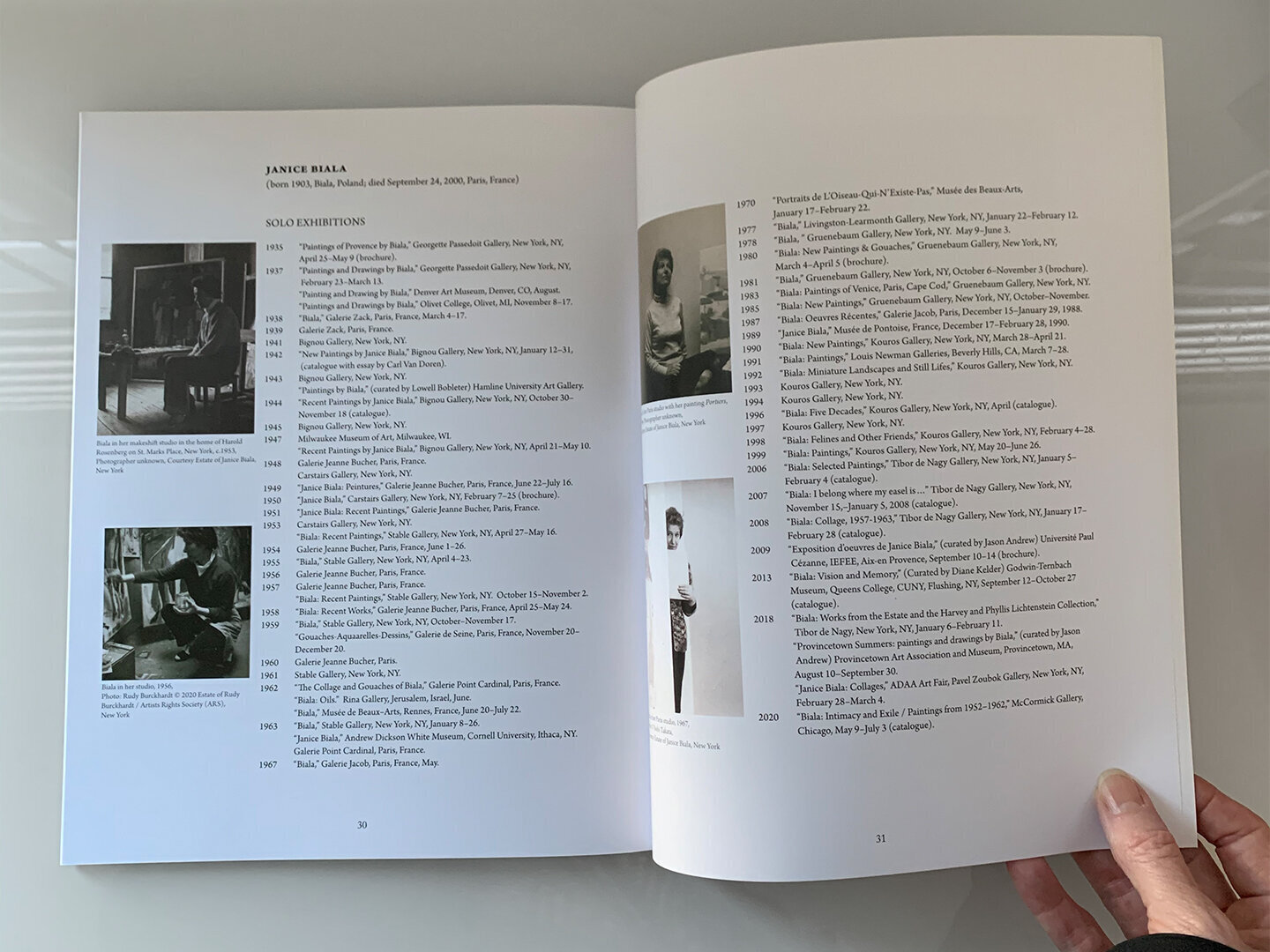
$20
Published on the occasion of Biala: Intimacy & Exile: paintings 1952-1962
Organized in collaboration with the Estate of Janice Biala at McCormick Gallery, Chicago, IL, November 7, 2020-January 9, 2021
Essay by Jason Andrew
Design by Thomas McCormick with Arno Pro typeface
Published by McCormick Gallery, LLC, and TMG Projects
Printed by Permanent Printing, Ltd.
32 pages, softcover, color
11 x 8.5 inches / 28 x 21.6 cm
Excerpt:
Biala chose subject matter over brute expression. Her paintings derive the time-honored triumvirate of still-life, landscape, and portraiture, and yet she approached these themes through an uncommon significance defined through a painterliness of gesture and color in calculated rhythm. Critic Michael Brenson aptly described her as “a blend of intimacy and exile.”[i]
[i] Brenson, Michael. “Biala at Kouros Gallery,” The New York Times, Friday, April 6, 1990.
New Publication: Joan Witek: Paintings from the 1980s
I first met Joan Witek in the Fall of 2003 while coordinating an exhibition of her work at the Kouros Gallery. During a visit to the studio, out of the storage racks, Joan pulled Las Meninas (1980-81).
Published on the occasion of Joan Witek’s solo exhibition Paintings from the 1980s,
organized in collaboration with Artist Estate Studio LLC, at MINUS SPACE, 2020.
Introduction by Matthew Deleget; Essay by Jason Andrew
Design by Peter Freeby for Artist Estate Studio
Printed by danny luk at arcoiris nyc, inc.
Published by Artist Estate Studio for MINUS SPACE, Brooklyn, NY, 2020
68 pages, softcover, color
11 x 8.5 inches / 28 x 21.6 cm
ISBN: 978-0-578-76802-1
Excerpt of essay written by curator Jason Andrew
I first met Joan Witek in the Fall of 2003 while coordinating an exhibition of her work at the Kouros Gallery. During a visit to the studio, out of the storage racks, Joan pulled Las Meninas (1980-81). When I inquired as to other paintings from the period, she pointed rather embarrassingly to a tall thick roll wrapped in plastic leaning in the far corner of her studio. Intrigued, it has been my desire to re-present this body of work since that time.
The impact of seeing Las Meninas was resounding. Its surface was unlike anything I had experienced. A thin slightly visible blue chalk line laid out the horizontal composition. Thick black marks made with oil stick layered in regularity, and graphite applied to the surface to temper the level of light.
Lee Krasner (1908-1984), Black and White Squares No. 1, 1948 Oil and enamel on linen 24 1/8 × 30 in. (61.3 × 76.2 cm). Private Collection. Photo: Diego Flores, courtesy Barbican Centre. © 2020 The Pollock-Krasner Foundation / Artists Rights Society (ARS), New York
Known for reductive, even geometric abstractions, it was curious to learn that Witek’s compositions, all of them, originate from a single narrative source. “The painting expresses my Spanish flair,” she told me. Witek’s father was Spanish, and as she described in her studio notes, “the title first came to me and I didn’t know what it was—eventually discovered it was Velázquez’s title.” Her notes continue: “Associations with me: Spanish / the Spanish love of black / named after the women who cared for the princesses at court—my being a woman / Spanish.”
The repetitiveness and regularity of Witek’s works seemingly link her to Agnes Martin. However, Witek’s approach—the gathering, sorting, collating, associating, patterning and the initiation of actions and proceedings—categorically moves her past Minimalism and closer to that of Process Art. In this regard, Witek shares a sharp sensibility with her peer the sculptor Jackie Winsor who described the origins of her work, “These things of mine certainly aren’t minimal. They’re not reduced to the most elementary things. The focus is not the cleaning up of abstract expressionism.”8 The same can be said for Witek.
Memories of Underdevelopment (1981), acquired by The Museum of Modern Art in 1983, was the painting that followed Las Meninas. Titled after the Cuban film Memorias del Subdesarrollo (1968), Witek’s studio notes indicate that she first responded to the subject through “organic” drawings in 1968, predating the painting. Having seen the film again on television, she noted “how much of a portrait [the painting] was of me.”
“I’ve always wanted to make incongruous things go together: like squares being portraits,” she once said, “In the 1970s the square was so important. The square as a square was not enough for me. I loved its containment but I wanted the square to be filled.”
That Witek sees many of her works from this period as self-portraits is astonishing—the clarity of a mark and its interpretation as figure / personality.
Joan Witek, Edward Teller’s Dream, 1982, Oil and graphite on canvas 68 1/2 × 119 3/4 in (174 × 304.2 cm)
Introductory Glyph (1982) references her passion for Pre-Columbian Mayan hieroglyphs. This towering painting features at its center a single emblem glyph. Tall and sculpted, the totemic offering mimics an ancient stela whose carved glyphs give the reader a sense of place, situation, or setting for the telling of an event or history. “This fits perfectly with my hieroglyphs and their decipherment,” Witek said describing this work, “There is a constant language throughout waiting for that decipherment.”
In her review of this painting exhibited at Rosa Esman in 1984, Lowery Stokes Sims deciphers the painting this way:
The different proportions of the glyphs became imbued with specific meanings that carry into other paintings […] in Introductory Glyph the expanse of the central glyph, surrounded as it is by twelve registers of regularly placed strokes (larger ones on the bottom two rows), creates a decidedly negative space (a compositional black hole) that literally pulls the space dramatically back into the center. To counterbalance this effect, and to achieve a visual electricity that is comparable to that of the diamond-shaped interstices between the bottoms and tops of the rows of glyphs, Witek places a jagged edge down the center of the large glyph.
Edward Teller’s Dream (1982) is a unique subject for Witek as it makes use of the traditional association of black with death. The genesis of the idea for the painting is fully described in her studio notes about having seen the Teller documentary called A is for Atom, B is for Bomb:
the subject… is the emptiness of the vast ‘field’ of vertical four-inch strokes. Here, hopefully, opposites operate and after the vastness is realized, the backup is the tenseness of all those uninterrupted strokes. The painting needed to be ten feet to create that emptiness.
Emptiness is experienced through the repetitive architecture of Witek’s strokes,—what the artist once referred to as “geometrically common destiny”—a bundle of which stack up like a tomb at the bottom center of this painting. And we are right to read the painting this way, as searching for the structure of the composition, Witek studied the architecture of Egyptian funerary tombs.
Jason Andrew reviews Joan Snyder at CANADA
In a 1976 Cincinnati Enquirer review of Joan Snyder’s paintings, the reviewer, Owen Findsen, surmised that she had “picked up a little of this, a little of that … and made it all uglier.” While he found her work offensive, even questioning it’s validity, for those like me who have come to love Snyder’s work, it couldn’t be a bigger compliment. Joan Snyder paints her world from the inside out.
Joan Snyder, installation view. Left: Ode to Summer (2019); Right: Weeping Cherry Tree & Thee (2020) / Courtesy CANADA
Contributed by Jason Andrew
In a 1976 Cincinnati Enquirer review of Joan Snyder’s paintings, the reviewer, Owen Findsen, surmised that she had “picked up a little of this, a little of that … and made it all uglier.” While he found her work offensive, even questioning it’s validity, for those like me who have come to love Snyder’s work, it couldn’t be a bigger compliment. Joan Snyder paints her world from the inside out.
Unabashedly expressive, her paintings are born of sorrow and moods, loss and struggles, and yes, peace and love as well. The new paintings now on view at CANADA echo a familiar cantata – an unapologetic narrative. “They are a form of keeping time,” Helen Molesworth writes in her witty catalogue essay accompanying the exhibition, “of remaining present, of acting as both observer and recorder.” The catalogue also features commentary by Wallace Whitney and Sean Scully.
Consistent throughout her work since the 1960s is Snyder’s use of a “stroke” – a heavy gesture succinctly pulled horizontally. Conceived as an alternative to the Great God Grid, this mark can be interpreted as a cancellation, a kind of crossing out. At first, at least, it was distinctly her own. Each stroke works in tandem with saturated orbs, scribbles, and textured elements of collage. While overtly physical, her paintings, often multi-paneled, are not lost to the oblivion of expression.
Snyder has always been outspoken, and her paintings are a kind of glorious outrage. When asked by Ruth Iskin, Lucy Lippard, and Arlene Raven to describe her art and its relationship to Feminism in 1977, she responded with an associative fusillade:
layers, words, membranes, cotton, cloth, rope, repetition, bodies, wet, opening, closing repetition, lists, life stories, grids, destroying grids, houses, intimacy, doorways, breasts, vaginas, flow, strong, building, putting together many disparaging elements, repetition, red, pink, black, earth feel colors, the sun, the moon…
The exhibition features a return to a common theme for Snyder, that of her “Field Series.” These works, painted in her studios in Woodstock and Brooklyn, continue to be about the sacred, the serene, fields of moons, moons in mud, rippling ponds, landscapes stretched out, and daily diaries exposed. These lush visions tell powerful stories.
Ron Gorchov, Painter Who Challenged Viewers’ Perceptions, Dies at 90
Seeking “a new kind of visual space” and using a vivid palette, he stacked multiple canvases with gently curved, round-cornered tops.
Ron Gorchov at his studio in Brooklyn in 2012. Dissatisfied with painting on a flat rectilinear surface, he began creating pieces that were saddle-shaped. Credit: Brian Buckley
Ron Gorchov, an abstract painter known for vividly colored, saddle-shaped canvases that curved away from the wall and gently warped the viewer’s perception, died on Aug. 18 at his home in Red Hook, Brooklyn. He was 90.
His death was confirmed by his Manhattan gallery, Cheim & Read. His family said the cause was lung cancer.
A tall, solidly built man with a kindly face, Mr. Gorchov may have been the closest thing the New York art world had to a gentle giant in the late 20th century. He was soft-spoken and approachable, with a relaxed manner. In a 2006 interview with The Brooklyn Rail, an art newspaper, he said that his paintings came not from angst but from “reverie, and luck” and “out of leisure.” He attracted a wide following among younger painters, particularly in the last 15 years of his life, when his work enjoyed a new prominence.
Mr. Gorchov was one of many painters who, in the 1970s, ignored rumors of the medium’s death while rejecting the scale, slickness and purity of Minimalist abstraction. These artists personalized abstract painting in all sorts of ways, for instance by adding images, working small or using quirky geometry. Several, including Ralph Humphrey, Robert Mangold, Richard Tuttle, Elizabeth Murray, John Torreano, Lynda Benglis, Marilyn Lenkowsky and Guy Goodwin, put an idiosyncratic, intuitive spin on a Minimalist staple — the shaped canvas. Mr. Gorchov did, too. But he was older, and his art blended some of the grandeur of 1950s Abstract Expressionism with the more skeptical, humorous attitudes of the ’70s.
Maurice Ronald Gorchov was born on April 15, 1930, in Chicago to Herman Noah and Grace (Bloomfield) Gorchov. His father was an entrepreneur. His mother was an artist who had studied painting at the Art Institute of Chicago and who, “began to give me ideas about art pretty early” he said in an unpublished 2017 interview with Hans Ulrich Obrist, artistic director of the Serpentine Galleries in London.
When he was 14, Mr. Gorchov began taking Saturday art classes at the Art Institute. In 1946 and 1947 he took night classes there. When he was 15 he began working as a lifeguard, his 6-foot-4 frame enabling him to pass for 18, the required age. At 18, he decided to become a painter.
Ron Gorchov, Painter With Curved Canvases, Dies At Age 90
Ron Gorchov, the artist famous for his curved, saddle-shaped canvases, died on Tuesday at the age of 90.
Ron Gorchov at his Brooklyn Studio. Photo by Brian Buckley, 2012.
Ron Gorchov, the artist famous for his curved, saddle-shaped canvases, died on Tuesday at the age of 90.
Gorchov’s death was announced by Cheim and Reid Gallery of New York, which had co-represented him. Ron Gorchov was most famous for his curved canvases that almost made them a sculpture in their own right. These saddle-type canvases were sometimes stacked across the wall. Gorchov used to staple linen to the frames and painted them white, followed by layers of several colours. The end result didn’t hide the staples and left underlying colours exposed – but Gorchov preferred this ‘clumsy’ style. He said in a 2013 interview that he didn’t seek perfection; he liked the illusion of perfection.
The painter Ron Gorchov, known for his distinctively curved canvases, has died at 90.
The painter Ron Gorchov died on August 18, at age ninety. In celebration of his work, we are sharing this review of Gorchov’s 2005 solo show at Vito Schnabel, published in our November 2005 issue.
Ron Gorchov at his Brooklyn Studio. Photo by Brian Buckley, 2012.
The painter Ron Gorchov, best known for his vividly-painted and distinctly-shaped canvases, died on Tuesday. News of his death was announced by Cheim & Read, which represents the artist in New York. He was 90 years old.
Gorchov was born in 1930 in Chicago, and began studying art at the age of 14, when he took Saturday classes at the Art Institute of Chicago. In 1953, he moved to New York, where he became acquainted with acolytes of the New York School, including Mark Rothko and John Graham, among others. Gorchov supported his wife and son by working as a lifeguard until his breakout in 1960, when he was featured in a group show at the Whitney Museum and had his first solo exhibition at Tibor de Nagy Gallery.
While his self-described “abstract surrealist” style was indebted to the Abstract Expressionist titans of the day, Gorchov is perhaps most famous for his experiments with canvas. In 1967, after a brief hiatus from painting, Gorchov created what would become his signature bowed-frame canvas for the first time in Rothko’s studio. The concave works, which resemble shields or saddles, were made by stapling linen or canvas to a bent wooden frame, which Gorchov would then paint with pared down forms rendered in thin, vivid pigments reminiscent of Henri Matisse. The works walk the line between sculpture and painting, and placed Gorchov among the ranks of artists experimenting with shaped canvases, including Ellsworth Kelly, Frank Stella, Richard Tuttle, and Blinky Palermo.
Gorchov largely stayed in this mode throughout his career, and in 1975 his dedication to abstract experimentation landed him a solo exhibition at Fischbach Gallery as well as a spot in that year’s Whitney Biennial. The following year, he participated in “Rooms,” the legendary first exhibition at P.S. 1 Contemporary Art Center (now MoMA PS1).


